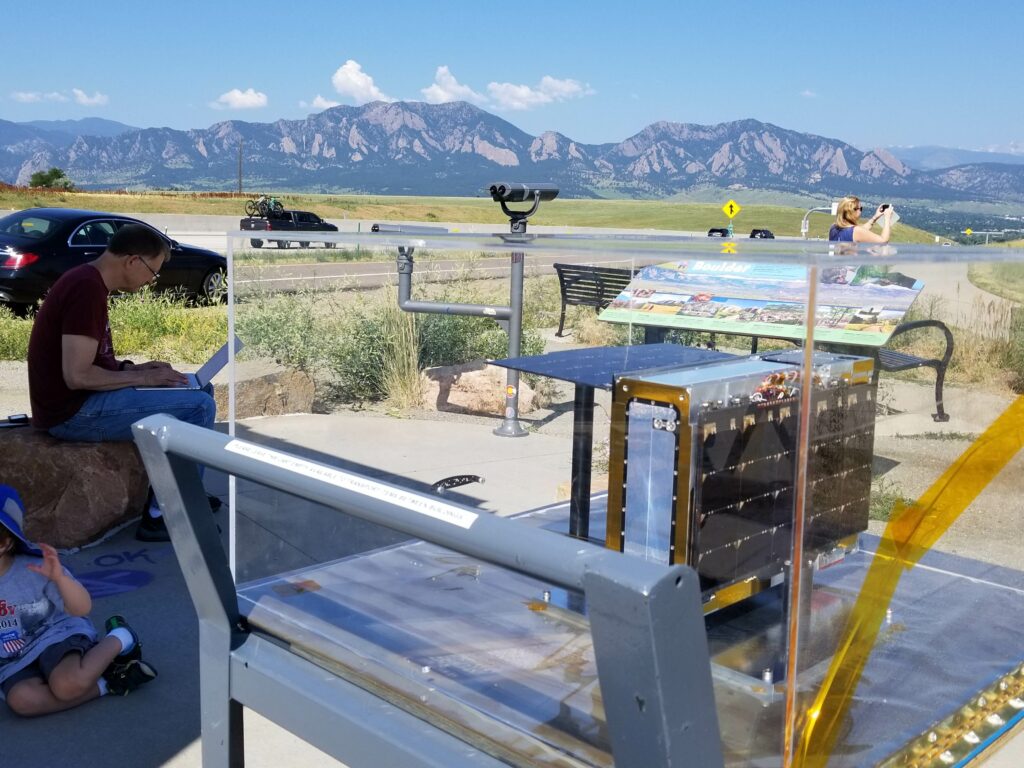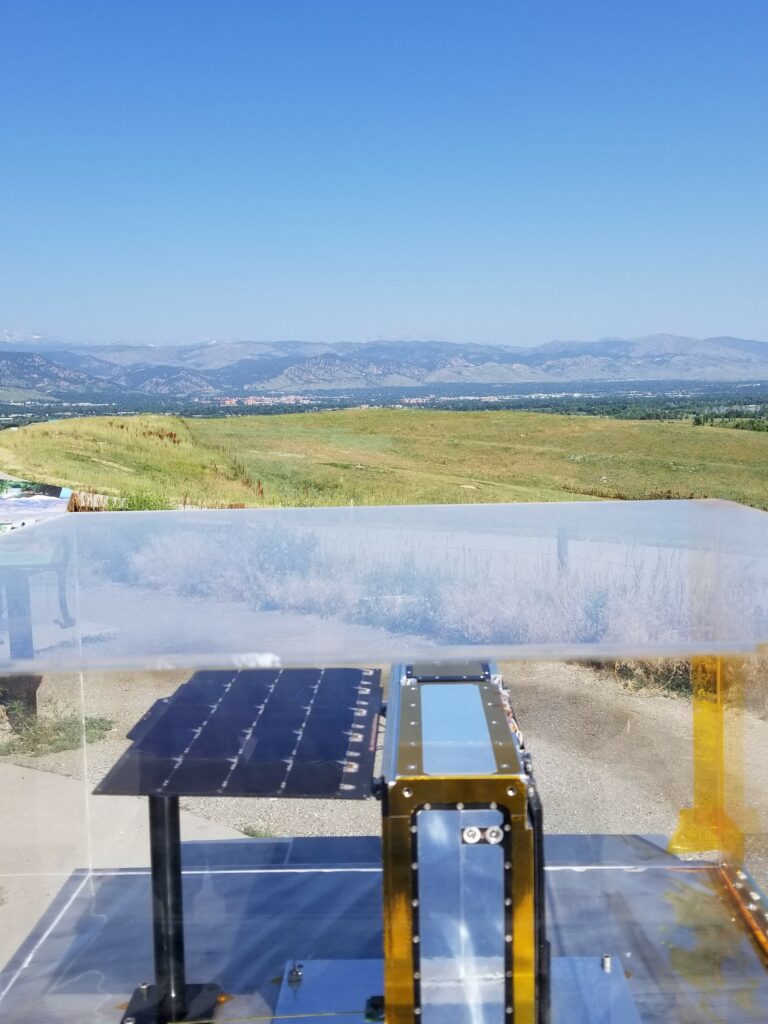Integration and Testing
Like any space mission, the CUTE spacecraft required component-level testing for both the science instrument and all subsystems within the spacecraft. Below are highlights from all of the different testing and integration to ensure CUTE functions!
Optical: Telescope and Star Tracker
Several components of the CUTE optics required testing and qualification. A vacuum calibration chamber known as the Long Tank was used to characterize the telescope’s Cassegrain focus performance, focus the spectrograph, and verify alignment between the star tracker and telescope boresight. The Long Tank was designed for and has historically been used for sounding rockets; a mount tip/tilt adaptor plate was designed to hold the CUTE instrument and spacecraft inside of the chamber. Below shows two images of the CUTE telescope inside of the Long Tank. The gold mirror in the back is a 2ft diameter collimating optic.

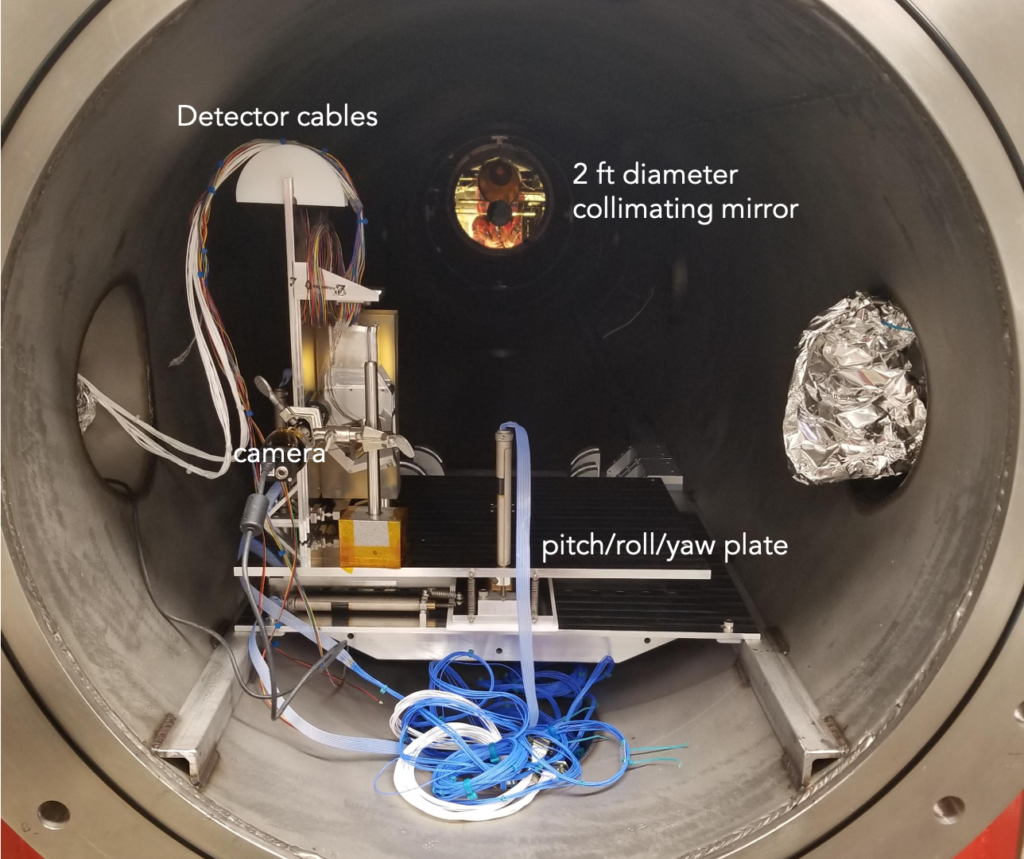
Vibrational Tests
To ensure that CUTE survives the launch, the spacecraft was subject to a 3-axis vibrational test, with vibration levels matching estimates of the Atlas V launch vehicle. The image below shows the CUTE spacecraft mounted on a clamping rail system, designed by LASP to mimic the launch dispenser. The whole spacecraft was wrapped in ESD plastic to protect the detector and instrument electronics.
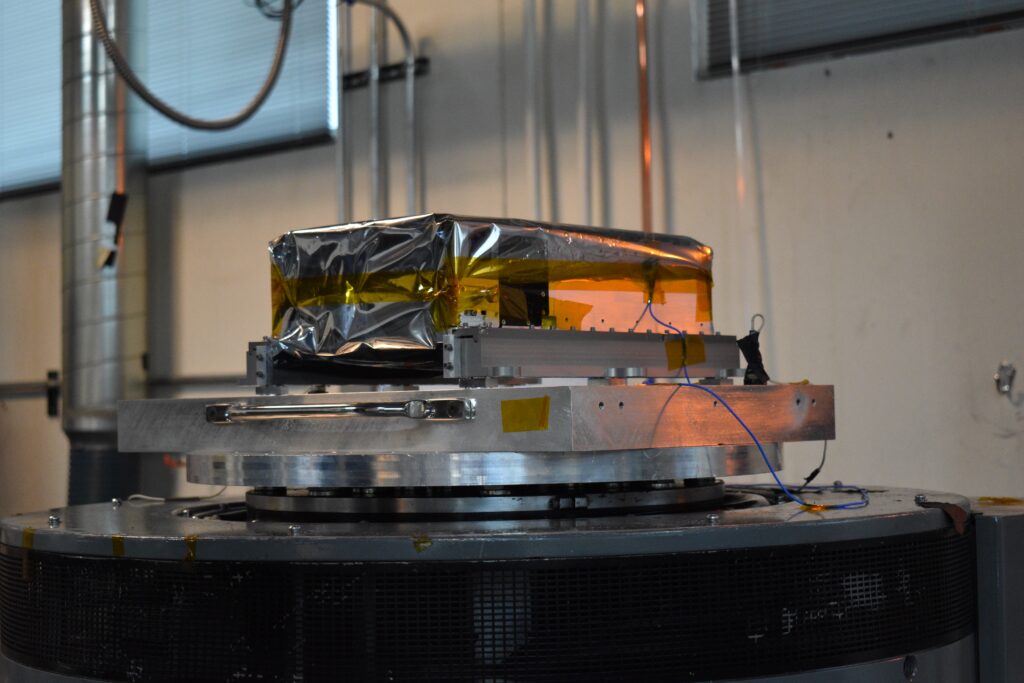
Thermal Vacuum
A thermal vacuum chamber is a temperature-controlled vacuum chamber that is used to simulate the thermal environment of CUTE’s orbit. CUTE utilized two of LASP’s thermal vacuum chambers. MOBI was used to test the solar panel deployment in hot and cold environments.
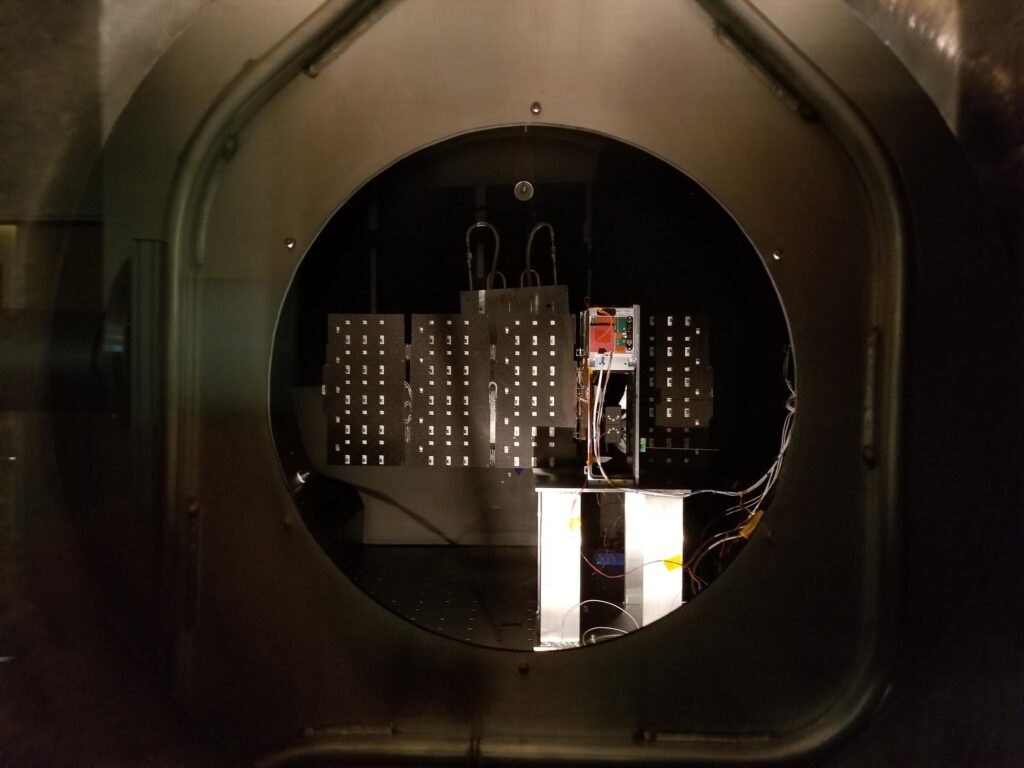
Bemco East was used for long-duration orbital simulations, where CUTE was subject to hot and cold cycles similar to what’s expected for CUTE’s orbit.
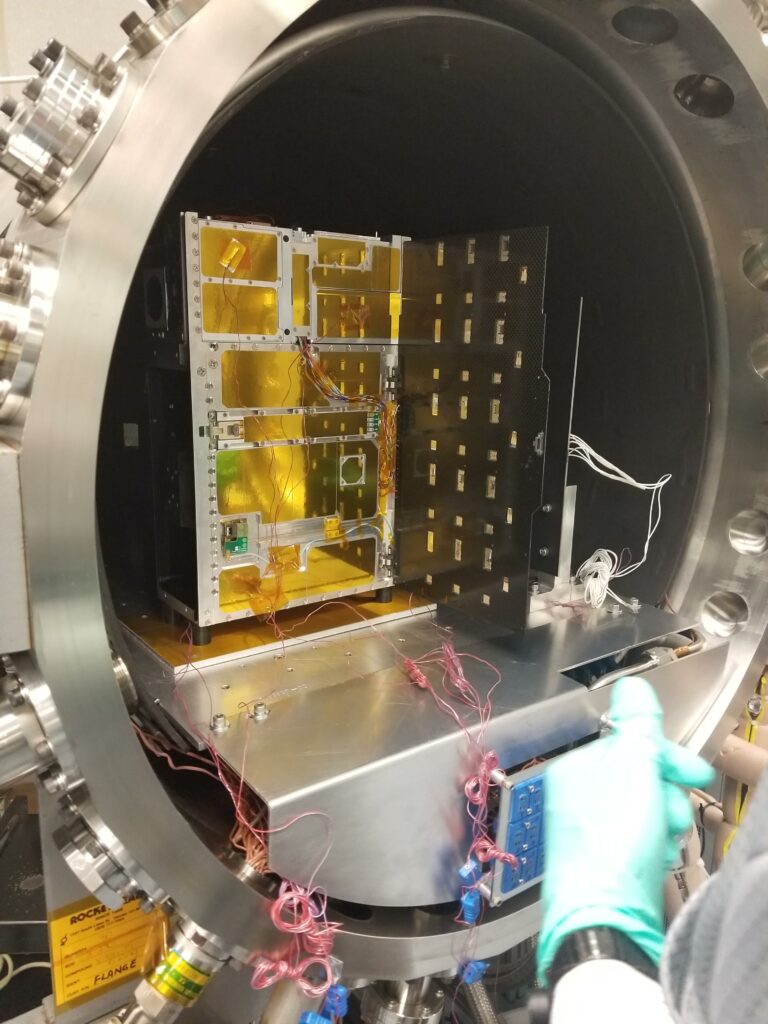
Sun Sensors and Reaction Wheels: Air Bearing
LASP’s air bearing and heliostat were used to test the sun sensors and reaction wheels. Sun shining on the sun sensors tells the spacecraft where the sun is located, and the reaction wheels move the spacecraft accordingly.
Radio/Outdoor
The last test conducted before CUTE was hand-delivered to the Vandenberg Space Force Base took place outdoors. We took CUTE to a viewing site a few miles away from the LASP ground station. There, we ensured that the UHF and S-band radios functioned properly and that CUTE and the ground station were able to communicate with each other. The UHF antenna sits underneath the single solar panel, so that solar panel was deployed to free the antenna.
